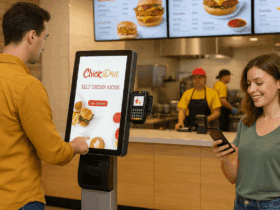Restaurant Investment is an exciting yet challenging endeavor, offering the potential for both significant financial rewards and personal fulfillment. The restaurant industry, known for its vibrant culture and dynamic environment, can be immensely rewarding, but it also comes with a unique set of risks and complexities. As with any business venture, success in the restaurant world requires more than just a great concept or an attractive menu. It requires thorough planning, a comprehensive knowledge of the market, and well-thought-out strategic choices.
For those looking to enter this competitive industry, it’s crucial to approach the investment with a clear vision and a comprehensive understanding of what drives profitability and growth in the restaurant business. Whether you’re a seasoned investor seeking to diversify your portfolio or a passionate entrepreneur eager to bring a culinary dream to life, knowing the key factors that influence a restaurant’s success can make all the difference.
In this article, we’ll explore nine essential considerations that every prospective Restaurant Investment should evaluate before diving into this exciting, yet demanding, industry. These insights will help you make informed decisions, minimize risks, and increase your chances of achieving a successful and profitable restaurant investment.
Below are the Factors when considering Restaurant Investment
1. Market Research and Location
The first and arguably most important factor to consider when investing in a restaurant is its location. The success of a restaurant heavily depends on its proximity to target customers and its accessibility. Conducting comprehensive market research is key to understanding the local dining trends, customer demographics, and competition. A well-located restaurant in a high-traffic area with a demand for the cuisine offered will have a higher likelihood of success.
2. Investment Structure and Agreements for Restaurant Investment
Understanding the restaurant investment structure is crucial. Whether you’re part of a restaurant investment group or investing individually, the structure of the investment will determine how profits are shared and the level of control you have over operations. It’s essential to clearly outline the terms in a restaurant investment agreement, including the distribution of profits, management roles, and exit strategies. A well-drafted agreement protects all parties involved and ensures smooth operation.
Must Read: How to Make Your Restaurant Business Profitable
3. Capital Requirements and Financial Planning
Determining the capital investment needed to open and sustain the restaurant is another critical factor. This includes the initial setup costs, such as leasing or purchasing a property, renovation, equipment, and working capital to cover the first few months of operation. A detailed restaurant investment plan should outline these costs and project cash flow to ensure that the restaurant can sustain itself until it becomes profitable. Understanding the financial demands upfront will help avoid unexpected shortfalls and the need for additional funding.
4. Return on Investment (ROI) Expectations for Restaurant Investment
Potential investors must assess the expected return on investment for the restaurant. The ROI is impacted by several elements, such as the cuisine type, pricing approach, and operational effectiveness. Evaluating the potential ROI involves looking at industry benchmarks, similar restaurants in the area, and projected revenue based on market research. This will help determine whether the restaurant is a good investment and set realistic financial goals.
5. Management and Operational Expertise
The success of a restaurant frequently depends on the skills and knowledge of its management team. Investing in a restaurant with experienced and capable managers can significantly reduce risks. It’s important to evaluate the management team’s track record, understanding their approach to operational challenges, staff management, and customer service. A strong management team can make the difference between a restaurant that thrives and one that struggles.
6. Understanding Market Trends and Consumer Preferences
The restaurant industry is extremely dynamic, with trends and consumer preferences continually changing. Staying informed about the latest market trends, such as the growing demand for plant-based options, sustainable practices, or tech-driven dining experiences, can give your investment a competitive edge. Being adaptable and responsive to changing consumer preferences will help ensure the long-term viability of the restaurant.
7. Legal and Regulatory Compliance for Restaurant Investment
Restaurants must adhere to a wide range of legal and regulatory requirements, from health and safety standards to licensing and labor laws. Non-compliance can lead to hefty fines, legal battles, or even the closure of the restaurant. Before investing, it’s vital to ensure that the restaurant is in full compliance with all relevant regulations and has the necessary licenses in place. Additionally, understanding the local zoning laws and restrictions can prevent potential legal issues down the road.
8. Risk Management and Contingency Planning
Investing in a restaurant carries inherent risks, from economic downturns to shifts in consumer behavior. It’s crucial to have a solid risk management strategy in place. This includes insurance coverage, contingency plans for unexpected expenses, and strategies for dealing with operational disruptions. Understanding how to mitigate these risks will help protect your investment and ensure that the restaurant can weather unforeseen challenges.
Must Read: The Importance of Great Customer Service in Restaurant Business
9. Exit Strategy and Investment Horizon for Restaurant Investment
Lastly, having a well-defined exit strategy is important. Whether you plan to be a long-term investor or are looking for a quicker return, knowing how and when you intend to exit the investment is crucial. This could involve selling the restaurant, merging with another business, or gradually reducing your stake. Having a well-defined exit strategy helps in making informed decisions throughout the investment and ensures that you can capitalize on your investment when the time is right.
Conclusion
Investing in a restaurant is not just about providing capital; it requires a strategic approach, careful planning, and a deep understanding of the market. By taking these nine factors into account, you can better position yourself for success and make well-informed decisions that align with your investment objectives. Whether you’re drawn by the allure of the restaurant industry or see it as a profitable business opportunity, being well-prepared will help you navigate the complexities and maximize your returns.










Leave a Reply